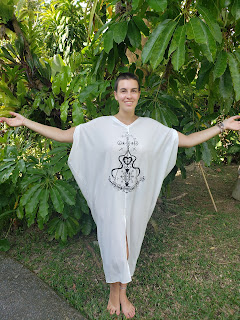About Rayon Fabric
 |
| A sample of rayon from a skirt, photographed with a macro lens. |
 |
| Another skirt with a different texture. |
About Rayon
Rayon is a manufactured regenerated cellulose fiber. Because it is produced from naturally occurring polymers, it is neither a truly synthetic fiber nor a natural fiber; it is a semi-synthetic or artificial fiber. Rayon is known by the names viscose rayon and modal in the textile industry. Most rayon is commercially produced from wood
pulp, though other inexpensive sources of bulk fiber such as bamboo can
also be used. The result is a lightweight fabric that
resembles silk.
Major fiber properties
Rayon is a versatile fiber and has the same comfort properties as natural fibers. It can imitate the feel and texture of silk, wool, cotton and linen. The fibers are easily dyed in a wide range of colors. Rayon fabrics are soft, smooth, cool, comfortable, and highly absorbent, but they do not insulate body heat, making them ideal for use in hot and humid climates.The durability and appearance retention of regular viscose rayon are low, especially when wet; also, rayon has the lowest elastic recovery of any fiber. However, HWM rayon is much stronger and exhibits higher durability and appearance retention. Recommended care for regular viscose rayon is dry-cleaning only. HWM rayon can be machine washed
Disposal and biodegradability
The biodegradability of fibers in soil burial and sewage sludge was evaluated by Korean researchers who found that biodegradability decreased in the following order: rayon, cotton, acetate (meaning rayon decays more readily than cotton). The ability of individual rayon-based fabrics to repel water was negatively correlated with their speed of degradation (meaning the greater the water-repelling ability of the fibre, the slower it will decompose). Silverfish can eat rayon.Using Rayon Material in your Compost
Composting
might not be the most obvious way to recycle rayon, but it's a viable
alternative. A study published in 2004 in the Journal of Applied Polymer
Science demonstrated that rayon breaks down more quickly than cotton
when composted. This isn't surprising, since rayon is
also a natural cellulose fiber, like cotton or paper. Like those other
substances, it can be used in your compost as a carbon-rich "brown"
material to balance the nitrogen found in your food wastes and grass
clippings. Cut or shred the fabric into the smallest
pieces you can to speed decomposition. Before using your compost, screen
it to remove any remaining pieces of fabric.
Rayon Alternative to cotton
Rising cotton prices in 2010 led clothing makers to begin replacing cotton with rayon in their fabrics. Designers such as Isaac Mizrahi have incorporated rayon into their newest designs. As demand for rayon increases, companies such as Fortress Paper have been investing in pulp mills to increase production. Rayon now sells for as much as $2.70 per pound, which has led to an increase in the retail price of clothing made with rayon, despite rayon's price advantage over cotton.Rayon Controversies
In early 2010, the U.S. Federal Trade Commission warned several retailers that some major manufacturers were falsely labeling rayon products as "bamboo", in order to appeal to environmentally conscious consumers. While rayon may be produced with bamboo as a raw material, and the two may be used for similar fabrics (though natural bamboo is not as smooth), rayon is so far removed from bamboo by chemical processing that the two are entirely separate.Rayon Producers
Trade names are used within the rayon industry to determine the type of rayon used. Viscose Rayon was first produced in Coventry England in 1905 by Courtaulds.Bemberg, for example, is a trade name for cupramonium rayon developed by J. P. Bemberg that is now only produced in Italy due to United States Environmental Protection Agency regulations in the US.
Modal and Tencel are widely used forms of rayon produced by Lenzing AG which is based in northern Austria.
Tencel, generic name lyocell, is made by a slightly different solvent recovery process, and is considered a different fiber by the US FTC.
Galaxy, Danufil, and Viloft are rayon brands produced by Kelheim Fibres, a German manufacturer.
Acordia is a major manufacturer of cellulose based fibers and yarns. Production facilities can be found throughout Europe, the U.S. and Brazil.
Visil rayon is a flame retardant form of viscose which has silica embedded in the fiber during manufacturing.
North American Rayon Corporation of Tennessee produced viscose rayon until its closure in the year 2000.
Grasim of India is the largest producer of rayon in the world (claiming 24% market share). It has plants in Nagda, Kharach and Harihar – all in India, as well as joint ventures in Canada, Laos and China.
Tencel and lyocell were first produced commercially by Courtaulds at Grimsby in England. The process which dissolves cellulose directly in amine oxide was developed by Courtaulds Research in Coventry.
Sources: http://greenliving.nationalgeographic.com/rayon
http://en.wikipedia.org/wiki/Rayon



Comments